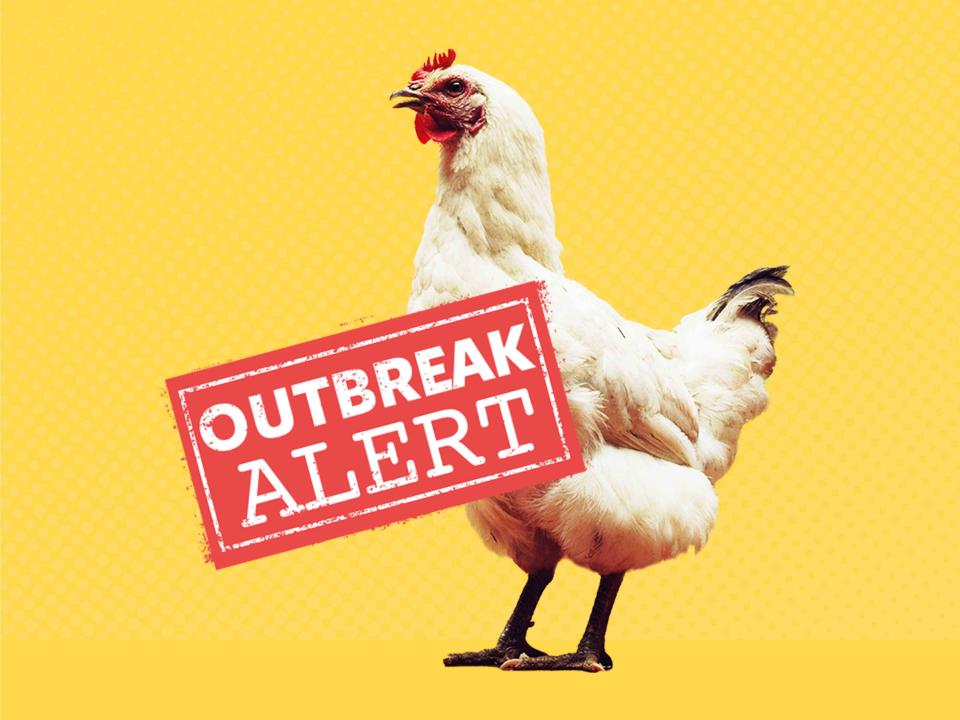Chicken Linked to Salmonella Outbreak in 29 States
Here's how to keep yourself safe.

Dotdash Meredith / Janet Maples
The Centers for Disease Control and Prevention (CDC) is investigating a salmonella outbreak across 29 states that is linked to backyard poultry, including chicken and ducks. More than 100 salmonella cases have been reported across the U.S. after many people say they’ve come in contact with backyard poultry or purchased poultry from both retail stores and hatcheries.
The CDC has been tracking salmonella cases since February, and as of May 30, 33 people have been hospitalized, but no deaths have been reported. The outbreak has reportedly infected individuals in Alabama, Arizona, Arkansas, California, Colorado, Georgia, Illinois, Indiana, Kansas, Louisiana, Massachusetts, Minnesota, Mississippi, Missouri, Montana, Nebraska, New Mexico, North Carolina, Ohio, Oklahoma, Oregon, Pennsylvania, Rhode Island, South Carolina, Tennessee, Texas, Utah, Washington, and Wisconsin.
At this time, one poultry supplier cannot be identified as the root of the outbreak, so the CDC is urging anyone who comes into contact with backyard poultry to stay vigilant about safety measures.
Backyard Poultry Linked to Salmonella Outbreak Nationwide
Any backyard poultry can carry salmonella germs, according to the CDC, which means you can become infected if you swallow those germs after touching backyard poultry or anything they’ve touched, then touching your mouth or food.
To keep yourself healthy around backyard poultry, the CDC recommends washing your hands after touching the poultry, their eggs, or anything else in the area—and do not kiss or snuggle the animals or eat or drink anything while you’re around them. Additionally, the CDC advises that any supplies, including the shoes you wear inside the poultry coop, should be left outside of your house and properly disinfected.
If you collect the poultry’s eggs, be sure to collect them often and always throw away cracked eggs as germs from the shell can get inside. Before consuming or selling the eggs, clean them with a brush or cloth rather than water, since cold water can let germs into the egg. And, always store eggs in the refrigerator to slow the growth of bacteria.
Cooking the eggs to the proper 160 degrees F temperature is also imperative to kill any germs from the poultry.
For more information on best practices for safely raising or selling backyard poultry, you can visit the CDC’s site.
Salmonella Symptoms and Signs
Most individuals infected with salmonella will start experiencing symptoms between six hours and six days after swallowing the bacteria. If you have been in contact with backyard poultry and are experiencing any of these symptoms, contact your healthcare provider immediately.
Common salmonella infection symptoms include diarrhea—usually bloody or lasting more than three days—vomiting to the point you can’t keep liquids down, and dehydration. Most people will recover within four to seven days without treatment, but more severe cases—especially in children, adults older than 65, and those with weakened immune systems—may require hospitalization.
If you’ve been infected with salmonella, take medical action first, then report it to your local or state health department.
Read the original article on All Recipes.


